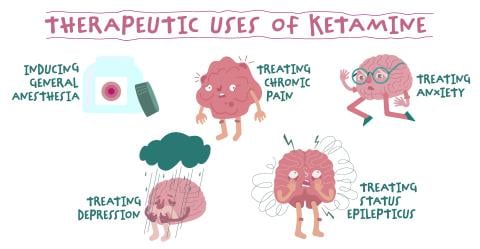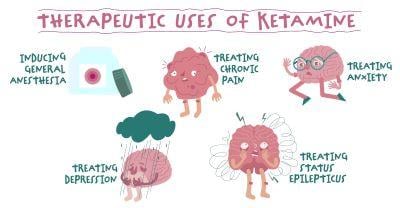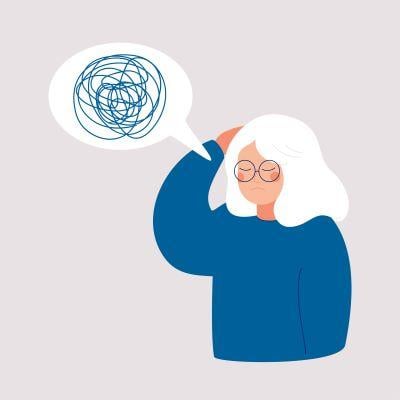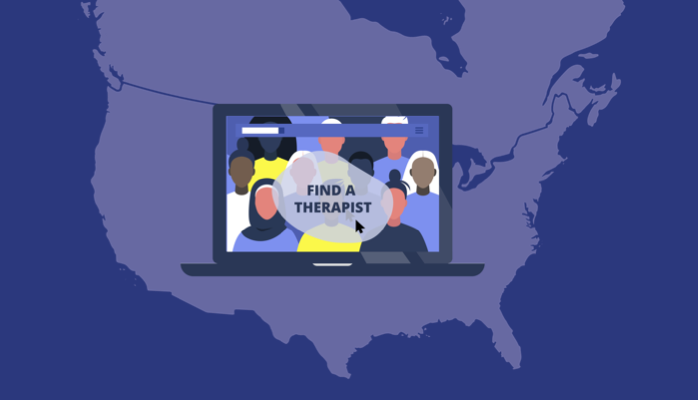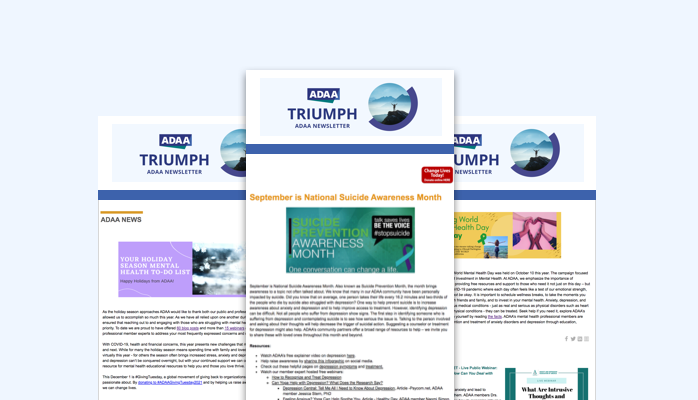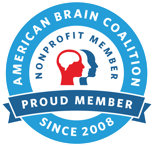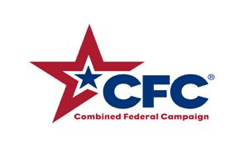Diagnostic and Statistical Manual of Mental Disorders (DSM-5)
For diagnostic criteria and codes, visit the Anxiety Disorders page of the DSM-5;requires subscription and login.
Obsessive-Compulsive Disorder (OCD)
Everyone occasionally has intrusive thoughts and repetitive behaviors. But people with OCD frequently experience these thoughts and behaviors and experience significant distress and impairment as a result. Intrusive and unwanted thoughts, images or urges are called obsessions. Obsessions can be difficult to control and create uncomfortable feelings such as fear, disgust, doubt, or a “not-right” feeling. People with OCD may feel the need to repeatedly perform a behavior or a routine (physically or in their minds) called a compulsion. While compulsions may temporarily alleviate some distress associated with OCD, these actions end up controlling the person by interfering with daily life and causing extreme distress.
OCD affects about 1 in 200 children and about 1 in 100 adults, with a lifetime prevalence of up to 2 to 3 percent. While OCD may occur at any age, it usually starts during childhood, adolescence, or early adulthood. Obsessions and compulsions may persist across the lifespan, and adults typically have symptoms that wax and wane over the course of adulthood. OCD occurs in both men and women at about the same rates.
The content of obsessions and the nature of compulsions can vary among individuals with OCD. Common obsessive themes include concerns about contamination, preoccupation with order and symmetry, fear of acting on an impulse to harm oneself or a loved one, or having unwanted sexual thoughts or thoughts prohibited by religious beliefs. Common rituals include needing to repeatedly check, touch, or count things (sometimes in a particular order).
Some individuals have mild to moderate symptoms, spending a few hours a day obsessing and performing compulsions with only slight intrusion on their daily activities, while others experience near constant intrusive thoughts and incapacitating interference due to compulsive ritualizing. Some make an effort to resist the obsessive thoughts and control compulsive behavior, while others avoid situations that trigger their symptoms. Furthermore, while many individuals with OCD recognize the irrationality of their symptoms (fair to good insight), some strongly believe their obsessions are true (absent to poor insight). Degree of insight can vary both from person to person, as well as fluctuate over time for an individual.
Treatment Options
Practice guidelines for treating OCD in children and adults recommend as first-line treatments cognitive-behavioral therapy (CBT) consisting of exposure and response prevention (EX/RP), pharmacotherapy with serotonin reuptake inhibitors (SRIs), or their combination. These treatments are described below, along with other strategies for when first-line treatments do not succeed. Research shows EX/RP either on its own or with an SRI can be superior to SRIs alone. How EX/RP or SRIs are delivered can affect their efficacy. It is important to collaborate with a professional who understands OCD to help guide the most effective treatment strategy for each individual given their treatment history and comorbid conditions.
| Adults | Children and Adolescents | |
| First-Line Treatments: Psychotherapy | EX/RP Format: individual or group Sessions: up to 25 |
CBT for children and adolescents involves psychoeducation, cognitive therapy, and exposure and response prevention (EX/RP). In children, ongoing parental involvement is essential. With children and adolescents, involvement from school and extended family members is also helpful. Family-based CBT (FB-CBT) recommended for children ages 5-8 Format: group Sessions: up to 25 |
| First-Line Treatments: Pharmacotherapy | FDA-approved SSRIs for OCD Daily (startinga FDA max. doseb) Fluoxetine 20-80 mg Fluvoxamine 50-300 mg Paroxetine 20-60 mg Sertraline 50-200 mg Not FDA approved SSRIs for OCD Escitalopram 10-20mg Citalopram 20-40 mgc Continue for 8 to 12 weeks, including 4 to 6 weeks at a maximally tolerated dose. a some patients may need to start at half this dose to minimize side effects b higher doses are sometimes used for rapid metabolizers or inadequate response after 8 weeks (see APA OCD practice guidelines) c citalopram should no longer be used in doses greater than 40 mg or 20 mg a day for adults older than 60 (FDA) |
Daily (starting aFDA max. dose) Fluoxetine 20-60 mg Fluvoxamine 50-300 mg Paroxetine 20 to 60 mg Sertraline 100-200 mg a In 2004, the FDA placed a “black-box” warning on antidepressant medications, including SRIs, reporting a two-fold increased risk for spontaneously reported suicidal thinking or behavior in children and adolescents taking these medications (2% vs. 4%). However, no signal of increased suicidal thinking was detected on structured assessment using clinical rating scales in these same trials. Subsequent analysis has suggested that antidepressants (specifically SSRIs) may have increased benefit in children with OCD (compared to MDD) and a decreased risk of spontaneously reported suicidality in pediatric OCD as compared to MDD. Using SRIs in children and adolescents requires careful balancing of the benefits and risks. |
| First-Line Treatments: Combined | CBT in combination with an SRI is a first-line treatment for adults with OCD. | CBT in combination with an SRI is a first-line treatment for children and adolescents with OCD. |
| Second-Line Treatments: Psychotherapy | Cognitive therapy (CT) Acceptance and commitment therapy (ACT) |
Some emerging evidence suggests that ACT is helpful for adolescents with OCD. |
| Second-Line Treatments: Pharmacotherapy | If no SSRI response: Switch SSRI Switch to: FDA approved SRI for OCD: Clomipramine Not FDA approved for OCD: Venlafaxine, Mirtazapine Add antipsychotic If partial SSRI response, add clomipramine, antipsychotic, or other agents (e.g., d-amphetamine, memantine, pregabalin, topiramate, lamotrigine, N-acetyl cysteine, clonazepam, lithium, buspirone) Try several of these alternatives. If no response, consider participation in clinical research of novel agents. |
If no SSRI response: Switch SSRI Switch to: FDA approved SRI for OCD: Clomipramine Not FDA approved for OCD: Venlafaxine, Mirtazapine Add antipsychotic If partial SSRI response, add clomipramine, antipsychotic, or other agents (e.g., d-amphetamine, memantine, pregabalin, topiramate, lamotrigine, N-acetyl cysteine, clonazepam, lithium, buspirone) Try several of these alternatives. If no response, consider participation in clinical research of novel agentsMany second-line treatments recommended for adults are also effective for children and adolescents: If no SSRI response: Switch SSRI or clomipramine; antipsychotics are often used to augment SRI response in clinical practice despite the fact that there are no randomized controlled trials in pediatric OCD, only data from retrospective reports, case reports, and open-label studies. This is concerning given the data from adults that only about one-third will benefit and the fact that youth may be particularly vulnerable to the long-term effects of antipsychotics, including weight gain and diabetes. In children who have failed all evidence-based treatments for OCD, consider participation in clinical research of novel agents. |
| Second-Line Treatments: Combined | D-cycloserine may be a helpful adjunct to EX/RP to facilitate learning and hasten early progress in therapy, although research findings are mixed. | N/A |
| Adjunctive Treatments | Motivational Interviewing (MI) Exercise |
N/A |
| Complementary and Alternative Treatments | Currently no treatment guidelines recommend widespread use of complementary and alternative medicine for OCD. One study suggests that eight one-hour sessions of mindfulness meditation is beneficial. Another study suggests that OCD patients can benefit from three weeks of electro-acupuncture, but these studies were not randomized; more research is needed. St. John’s Wort has not been shown to be effective. Stress management CBT, consisting of relaxation and deep-breathing exercises, positive imagery, and problem-solving skills, has not been shown to be effective for OCD. |
In general, no demonstrated effects for play-based, supportive, insight-oriented, relaxation, psychoanalytic, and psychodynamic therapies for the treatment of pediatric OCD. |
| Options for Treatment Refractory Conditions | If treatment refractory, consider increasing the intensity of EX/RP and/or level of care (i.e., intensive outpatient care, residential EX/RP program); somatic therapies (transcranial magnetic stimulation); or neurosurgical interventions (deep brain stimulation [DBS] or ablative procedures). Criteria for treatment refractory OCD in adults: three adequate SRI trials and at least two of the following medications for at least 1 month: antipsychotic, clonazepam, lithium, buspirone and adequate CBT with at least 20 sessions of EX/RP |
Neurosurgical procedures are not recommended in children. Criteria for treatment refractory pediatric OCD: two adequate SSRI trials (or clomipramine) and adequate CBT with EX/RP |
| Contraindicated Treatment | N/A | N/A |
| Comorbidity Concerns | OCD is often comorbid with other psychiatric disorders. Adults often have a lifetime diagnosis of an anxiety disorder (76%, e.g., panic disorder, social anxiety disorder, generalized anxiety disorder, specific phobia); mood disorder (63% for any mood disorder, most commonly major depressive disorder, 41%); obsessive-compulsive personality disorder (e.g. range as 23-32%); tic disorder (including Tourette’s disorder, up to 30%). Rates of OCD are also much higher than would be expected (based on its prevalence in the general population) in schizophrenia or schizoaffective disorder, eating disorders (i.e., anorexia nervosa and bulimia nervosa), and Tourette’s disorder. |
In children and adolescents, as in adults, obsessive-compulsive disorder is often long overlooked by others, or symptoms are often attributed to other disorders (tic disorders, autism spectrum, ADHD, ODD, eating disorders). Considerable care should be given in making accurate differential diagnosis. When conducting interview of history and present symptoms, carefully search for the core symptoms possible comorbidities, and psychosocial impairments. |
| OCD Clinical Practice Review Task Force Carolyn Rodriguez, MD, PhD, Stanford University – Chair Michael Bloch, MD, MS, Yale University Rebecca Sachs, PhD, Private Practice, Spectrum Services Monnica Williams, PhD, University of Louisville Consultants: Moira Rynn, MD, Columbia University, and Helen Blair Simpson, MD, PhD, Columbia University June 15, 2015 |
||
